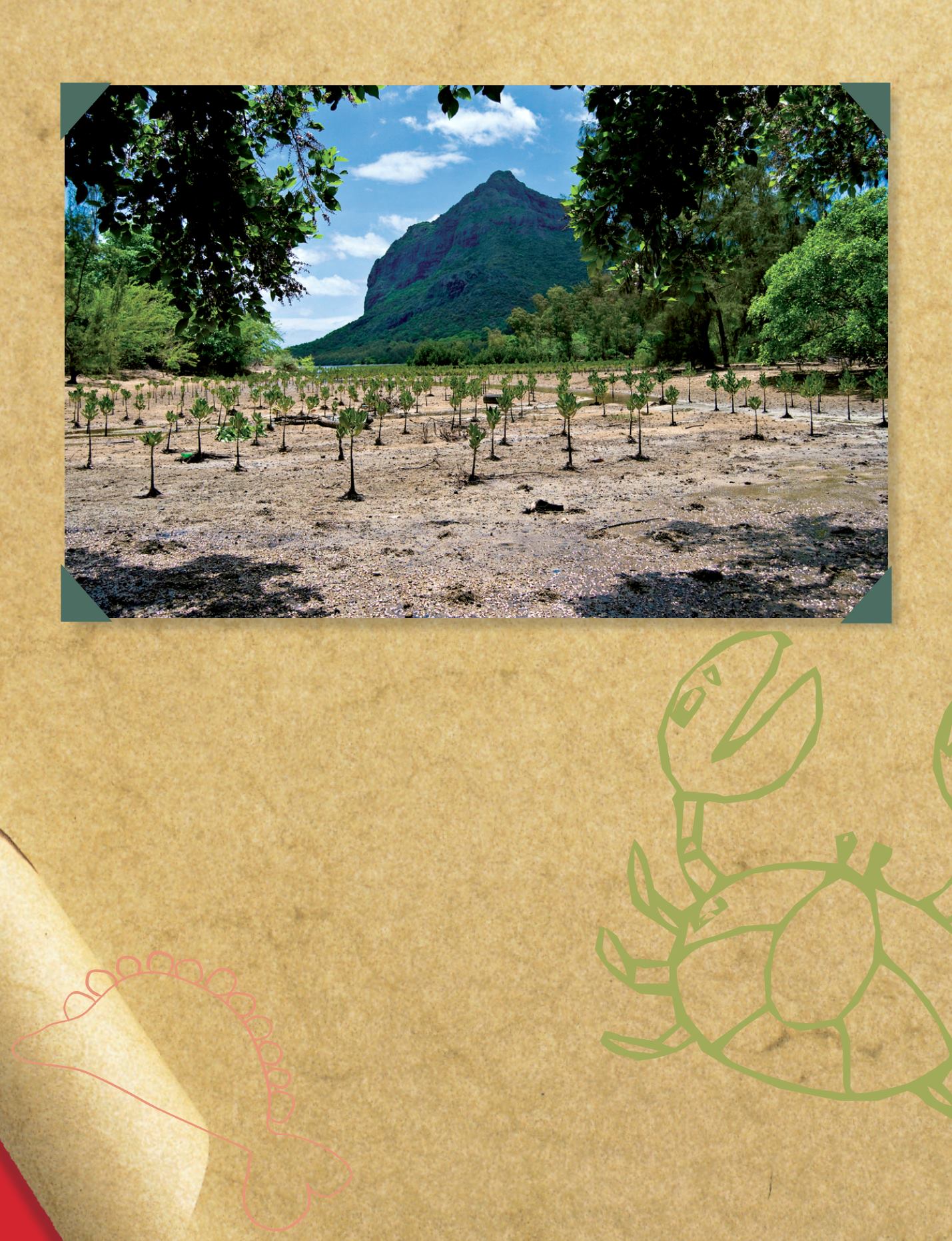
72 - Sustainable Development in Africa & Satellites
M
angroves are forests that grow
in the sea! They occur along the
sheltered regions of tropical
and subtropical coastlines, often being
replaced in more temperate latitudes
by salt marshes. Worldwide, mangroves
are estimated to cover less than 185000
km
2
and dominate approximately 50% of
the tropical coastline between latitudes
32
o
N and 38
o
S. The total mangrove area
in Africa is estimated at 3,2 million ha,
representing about 19% of the world
mangrove cover.
Mangrove areas play significant ecological,
socioeconomicandenvironmental functions.
They are among the most important
intertidal habitats for marine and coastal
fisheries. Local communities gather, from
mangroves, molluscs such as oysters,
cockles, crabs, and shrimps for local
and commercial needs. In the mangrove
channels and adjacent lagoons, finfish
such as mullets, anchovy, snappers
ands rabbit fish among others are widely
caught. Other wildlife includes seabirds,
alligators, and thousands of insects and
other invertebrate species. Floristically,
there are more than 70 species of
mangrove trees worldwide. The genus
Rhizophora
and
Avicennia
, occur in most
mangrove areas of the world.
Mangroves provide direct wood and non-
wood products and services in terms
of building poles, charcoal, tannins,
firewood, and shoreline protection. Their
complex root systems help in binding
and consolidating sediments as well as
breaking waves, reducing erosion and
providing a buffer during storm events.
Due to their high rates of productivity
and long term carbon deposition in the
soil, mangroves serve as reliable carbon
sinks.
Despite these functions, mangroves in
Africa have been severely impacted over
the years, with West Africa reporting
a 20-30% loss and Eastern Africa an
8% loss within the past 25 years (FAO,
2009). Major causes of degradation
and loss have been over-exploitation of
wood products, conversion of mangrove
area for other land uses such as pond
aquaculture, agriculture, coastal landfill,
urbanization as well as indirect effects of
pollution and upstream land use. Loss
of mangrove has negative effects to food
security, shoreline stability, biodiversity
conservation, and livelihood. Many
reasons why we need to protect them.
Management plans
Remote sensing applications have been
applied to mangroves for inventory
and mapping, change detection, and
management of aquaculture activities. A
team from Kenya Marine and Fisheries
Research Institute and the School
of Geosciences at the University of
Edinburgh in Scotland is testing the
use of airborne LiDAR (Light Detection
And Ranging systems) technology in
assessing the status of East African
i
Mangrove at Bassin Léon, Le Morne, Mauritius. This picture won a prize in 2011 at the Acclimate (IOC) regional project photo competition, an Indian Ocean
Commission initiative for adapting to climate change.
© G. Manuel/COI, Acclimate
Mangroves need
protection


